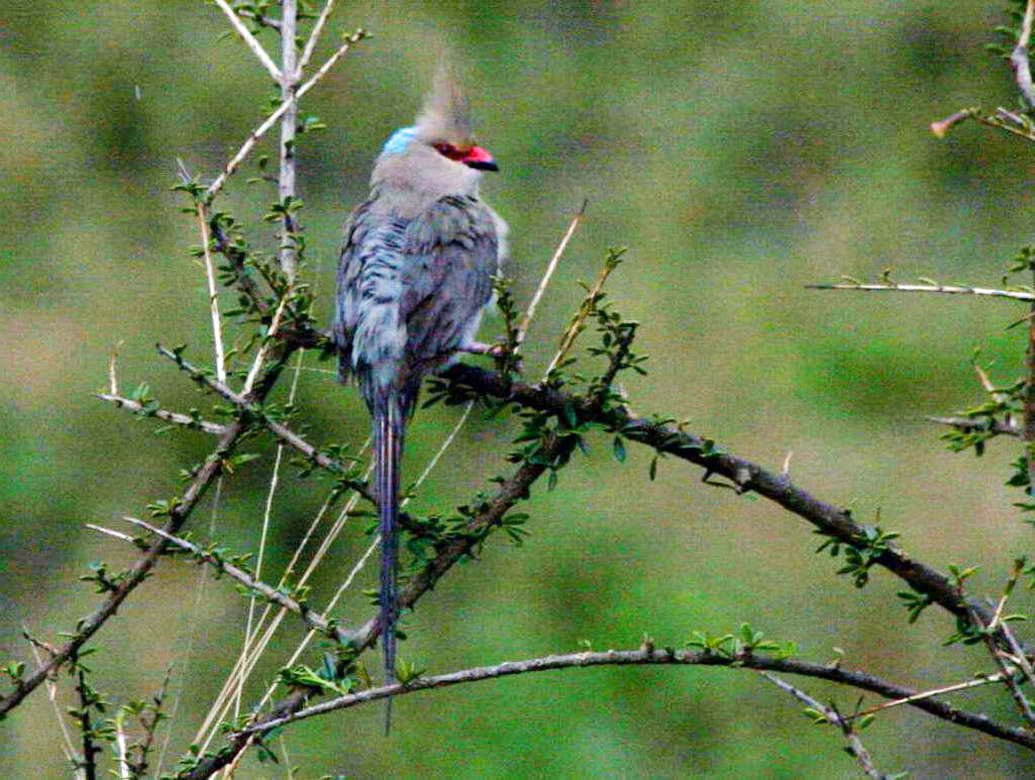
Urocolius macrourus
TAXONOMY
Lanius macrourus Linnaeus, 1766, Senegal. Seven subspecies.
OTHER COMMON NAMES
French: Coliou huppй; German: Blaunacken-Mausvogel; Spanish:
Pбjaro-ratуn Nuquiazul.
PHYSICAL CHARACTERISTICS
12.6–15.7 in (32–39.8 cm); 1.2–2.2 oz (34–62 g). Ash-gray
plumage; upperparts darker than underparts; turquoise-blue
patch on nape and hindneck. Long crest and very long, slender
tail. Female’s tail is shorter than male’s.
DISTRIBUTION
Western Africa from south Mauritania to Somalia and Tanzania.
HABITAT
Open woodland and savanna, often spreading in wetter seasons
to breed, but moving to water-courses during the dry
season.
BEHAVIOR
Pairs separated for breeding are afterwards observed in family
parties, and sometimes in large concentrations near rivers in
the dry season.
FEEDING ECOLOGY AND DIET
Fruits and other green matter, especially dependent on Salvadora
berries; more recently observed feeding in human cultivations.
REPRODUCTIVE BIOLOGY
Fragile nests, eggs white with red-brown dots, streaks, and
patches, clutches two to three eggs. Newly hatched young are
naked with characteristic bulbous swellings at base of lower
mandible. Grow quickly, flying after 16–18 days.
CONSERVATION STATUS
Not threatened and obviously expanding into western Africa,
following the introduction of cultivated plants.
SIGNIFICANCE TO HUMANS
Not yet regarded as pests.
Other popular Animals
Photo Gallery of - Blue-naped mousebird




 Animalia Life
Animalia Life